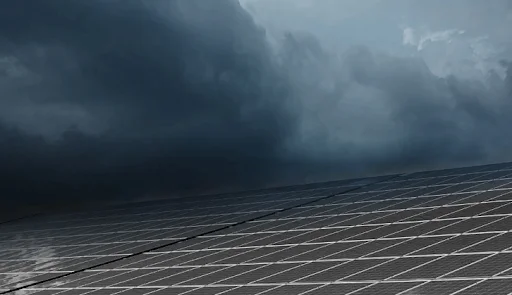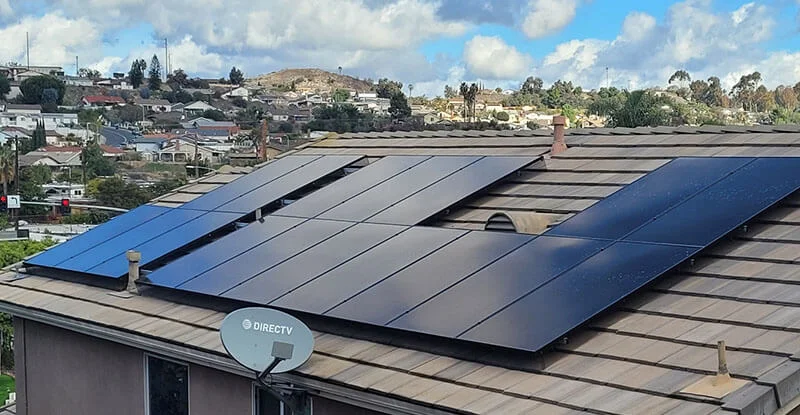The Latest Grid-Enhancing Technologies Revolutionizing the Power Industry

In Pakistan, where energy demand continues to grow, ensuring a stable and efficient power supply is more critical than ever. The power industry is at the forefront of technological advancements, with new grid-enhancing technologies emerging to meet energy distribution challenges. These innovations are shaping the future of electricity and significantly impacting how power is generated, transmitted, and consumed across the country.
1. Smart Grids: The Backbone of Modern Energy Networks
One of the most significant innovations in the power sector is the development of smart grids. Unlike traditional grids operating on a one-way transmission model, smart grids utilize advanced technology to create a two-way communication system between power suppliers and consumers.
- Real-time Monitoring: Smart grids enable real-time energy consumption monitoring, allowing utilities to manage supply and demand effectively.
- Fault Detection: They can quickly detect faults and outages, reducing the time needed for repairs.
- Energy Efficiency: Smart grids optimize energy use, reducing wastage and improving overall energy efficiency.
According to recent statistics, implementing smart grids can reduce energy consumption by up to 10%, a substantial saving for consumers and the national grid.
2. Advanced Metering Infrastructure (AMI): Empowering Consumers
Advanced Metering Infrastructure (AMI) is a key component of smart grids, giving consumers more control over their energy usage. AMI systems include smart meters that record energy usage in intervals and communicate this information to both consumers and energy providers.
- Detailed Insights: Consumers receive detailed insights into their energy consumption patterns, enabling them to make informed decisions about their energy use.
- Dynamic Pricing: With AMI, energy providers can offer dynamic pricing, where electricity costs vary based on demand, encouraging consumers to use energy during off-peak hours.
- Remote Monitoring: AMI allows for remote monitoring and management, reducing the need for manual meter readings.
These systems are becoming increasingly popular in Pakistan, where managing electricity bills and reducing consumption are priorities for many households and businesses.
3. Energy Storage Systems: A Game Changer for Renewable Energy
As Pakistan continues to invest in renewable energy, such as solar and wind power, the need for effective energy storage systems has become more pressing. Energy storage technologies, particularly batteries, are essential for storing excess energy generated during peak production times and releasing it when needed.
- Load Balancing: These systems help balance the load on the grid, especially during peak demand periods.
- Renewable Integration: Energy storage makes integrating renewable energy into the grid easier, reducing reliance on fossil fuels.
- Grid Stability: By storing energy, these systems improve grid stability and reliability, ensuring a continuous power supply even during fluctuations in production.
Statistics indicate that the global market for energy storage systems is expected to grow by 20% annually, reflecting the increasing importance of these technologies in modern power grids.
4. High-Voltage Direct Current (HVDC) Technology: Revolutionizing Long-Distance Transmission
High-voltage direct Current (HVDC) technology transforms how electricity is transmitted over long distances. Unlike traditional alternating current (AC) transmission, HVDC is more efficient and has lower transmission losses.
- Efficiency: HVDC transmission reduces energy losses by up to 30% compared to traditional AC systems.
- Long-Distance Transmission: It is particularly beneficial for transmitting electricity over long distances, from remote renewable energy sites to urban centers.
- Grid Integration: HVDC technology allows for better integration different energy sources, including renewables, into the grid.
In Pakistan, where the distance between power generation sites and consumption centers can be vast, HVDC technology is playing a crucial role in improving the efficiency of the national grid.
5. Distributed Energy Resources (DERs): Decentralizing Power Generation
Distributed Energy Resources (DERs) refer to small-scale energy generation sources, such as solar panels, wind turbines, and biomass generators, located close to the energy consumed. Unlike traditional centralized power plants, DERs decentralize power generation, offering several advantages.
- Localized Power Generation: DERs reduce the need for long-distance transmission, reducing energy losses.
- Grid Resilience: By distributing power generation across multiple locations, DERs enhance the grid's resilience, making it less vulnerable to outages.
- Cost-Effective: DERs can be more cost-effective, especially in remote or rural areas where grid extension is challenging.
The adoption of DERs is growing in Pakistan, particularly in rural areas where access to the national grid is limited. These technologies are helping to bring reliable electricity to more parts of the country.
6. Grid Modernization with IoT: Connecting Devices for a Smarter Grid
The Internet of Things (IoT) significantly modernizes the grid by connecting various devices and systems. IoT enables better communication between grid components, leading to more efficient management and operation.
- Predictive Maintenance: IoT devices can monitor the health of grid components and predict when maintenance is needed, reducing downtime.
- Load Management: IoT helps manage the load on the grid by monitoring and controlling the demand in real-time.
- Enhanced Security: By integrating IoT, grids can be more secure, with real-time monitoring for potential threats or breaches.
In Pakistan, IoT is being increasingly adopted to enhance the efficiency and security of the power grid, helping to ensure a more reliable energy supply.
7. Microgrids: Creating Independent Power Networks
Microgrids are smaller, localized grids that can operate independently or in conjunction with the national grid. They are particularly useful in areas prone to outages or where a reliable power supply is critical, such as hospitals or industrial zones.
- Independence: Microgrids can operate independently of the main grid, providing power during outages.
- Renewable Integration: They are often integrated with renewable energy sources, making them more sustainable.
- Scalability: Microgrids can be scaled to meet the specific needs of a community or facility.
In Pakistan, microgrids are being explored to improve energy access in remote areas and enhance the resilience of critical infrastructure.
8. Virtual Power Plants (VPPs): Aggregating Power Resources
Virtual Power Plants (VPPs) aggregate multiple small-scale energy resources, such as solar panels, wind turbines, and battery storage, to operate as a single power plant. VPPs are a modern solution to managing distributed energy resources more effectively.
- Flexibility: VPPs offer flexibility in managing power supply and demand, helping to balance the grid.
- Cost Savings: By aggregating resources, VPPs can reduce costs and improve the efficiency of energy distribution.
- Renewable Integration: VPPs make integrating renewable energy into the grid easier, supporting a more sustainable energy future.
The concept of VPPs is gaining traction in Pakistan, where the need for flexible and efficient energy management solutions is becoming more apparent.
Crown Solar: Leading the Way in Grid-Enhancing Technologies
At Crown Solar, we are committed to embracing and implementing the latest grid-enhancing technologies to revolutionize the power industry in Pakistan. Our focus is on providing innovative solutions that meet the current energy demands and pave the way for a more sustainable and efficient future.
- Solar Solutions: We offer state-of-the-art solar solutions integrated with the latest grid-enhancing technologies, ensuring maximum efficiency and reliability.
- Energy Storage: Our energy storage systems are designed to complement our solar installations, providing a continuous and stable power supply even during peak demand.
- Smart Grids: Crown Solar is at the forefront of smart grid technology in Pakistan, helping to create a more resilient and efficient energy network.
In a country with ever-present energy challenges, Crown Solar is leading the way in adopting the technologies that will shape the power industry's future. Whether through our advanced solar solutions or our commitment to grid modernization, we are dedicated to powering Pakistan with the most innovative and reliable energy solutions.
Conclusion
The power industry is transforming, and new grid-enhancing technologies are pivotal in meeting Pakistan's growing energy demands. These innovations, from smart grids to energy storage systems, revolutionize how electricity is generated, transmitted, and consumed. As we look to the future, companies like Crown Solar are at the forefront of this revolution, ensuring that Pakistan's energy needs are met with the most advanced and efficient technologies.
See More Insights
Assessing the Durability of Solar Panels: Can They Withstand Hurricanes and Extreme Weather?
Join Us, Lead the Crown Change
Ready to power up? Partner with us. From comprehensive partner programs to media kits and warranty claims, all the support you need is just a click away.



